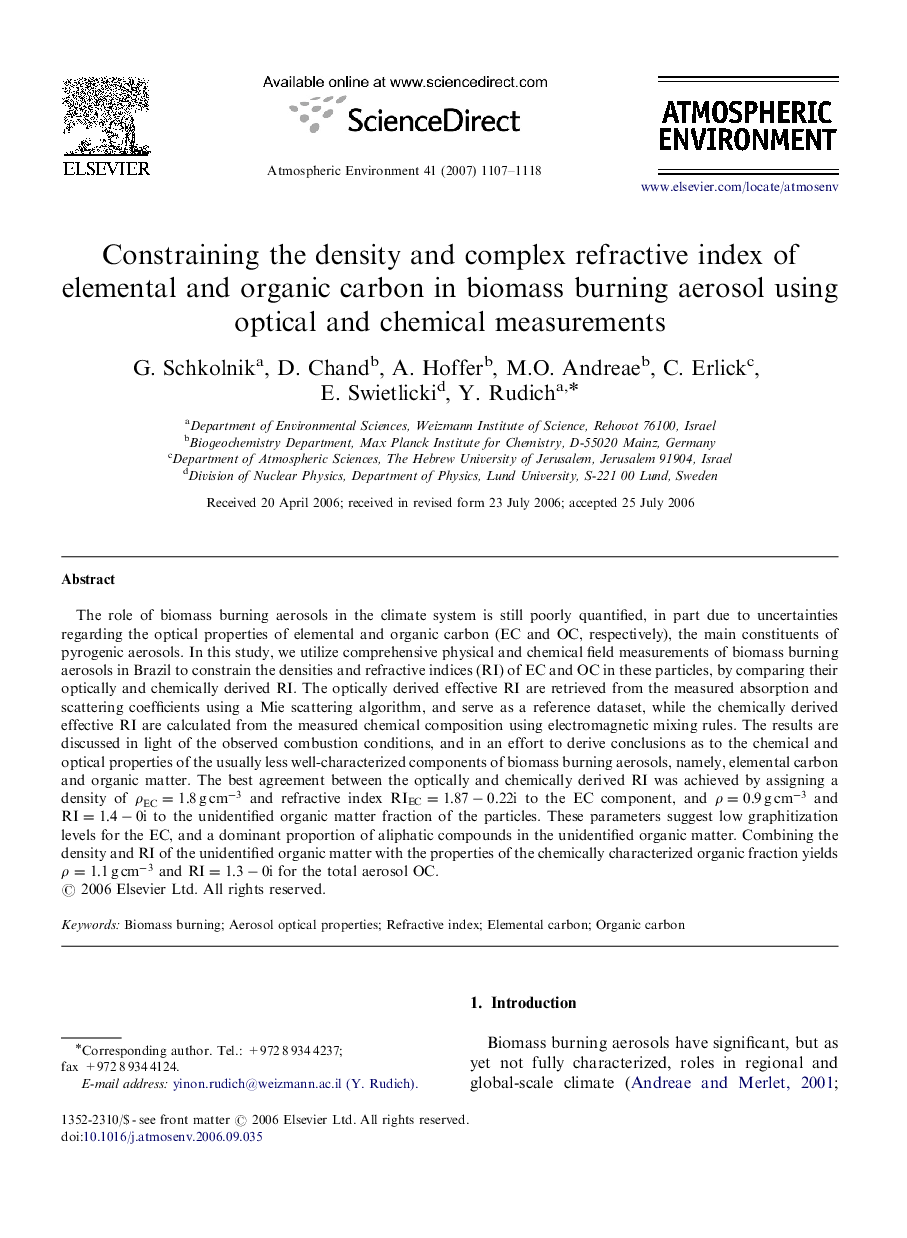| Article ID | Journal | Published Year | Pages | File Type |
|---|---|---|---|---|
| 4443083 | Atmospheric Environment | 2007 | 12 Pages |
The role of biomass burning aerosols in the climate system is still poorly quantified, in part due to uncertainties regarding the optical properties of elemental and organic carbon (EC and OC, respectively), the main constituents of pyrogenic aerosols. In this study, we utilize comprehensive physical and chemical field measurements of biomass burning aerosols in Brazil to constrain the densities and refractive indices (RI) of EC and OC in these particles, by comparing their optically and chemically derived RI. The optically derived effective RI are retrieved from the measured absorption and scattering coefficients using a Mie scattering algorithm, and serve as a reference dataset, while the chemically derived effective RI are calculated from the measured chemical composition using electromagnetic mixing rules. The results are discussed in light of the observed combustion conditions, and in an effort to derive conclusions as to the chemical and optical properties of the usually less well-characterized components of biomass burning aerosols, namely, elemental carbon and organic matter. The best agreement between the optically and chemically derived RI was achieved by assigning a density of ρEC=1.8gcm-3 and refractive index RIEC=1.87-0.22iRIEC=1.87-0.22i to the EC component, and ρ=0.9gcm-3 and RI=1.4-0iRI=1.4-0i to the unidentified organic matter fraction of the particles. These parameters suggest low graphitization levels for the EC, and a dominant proportion of aliphatic compounds in the unidentified organic matter. Combining the density and RI of the unidentified organic matter with the properties of the chemically characterized organic fraction yields ρ=1.1gcm-3 and RI=1.3-0iRI=1.3-0i for the total aerosol OC.
